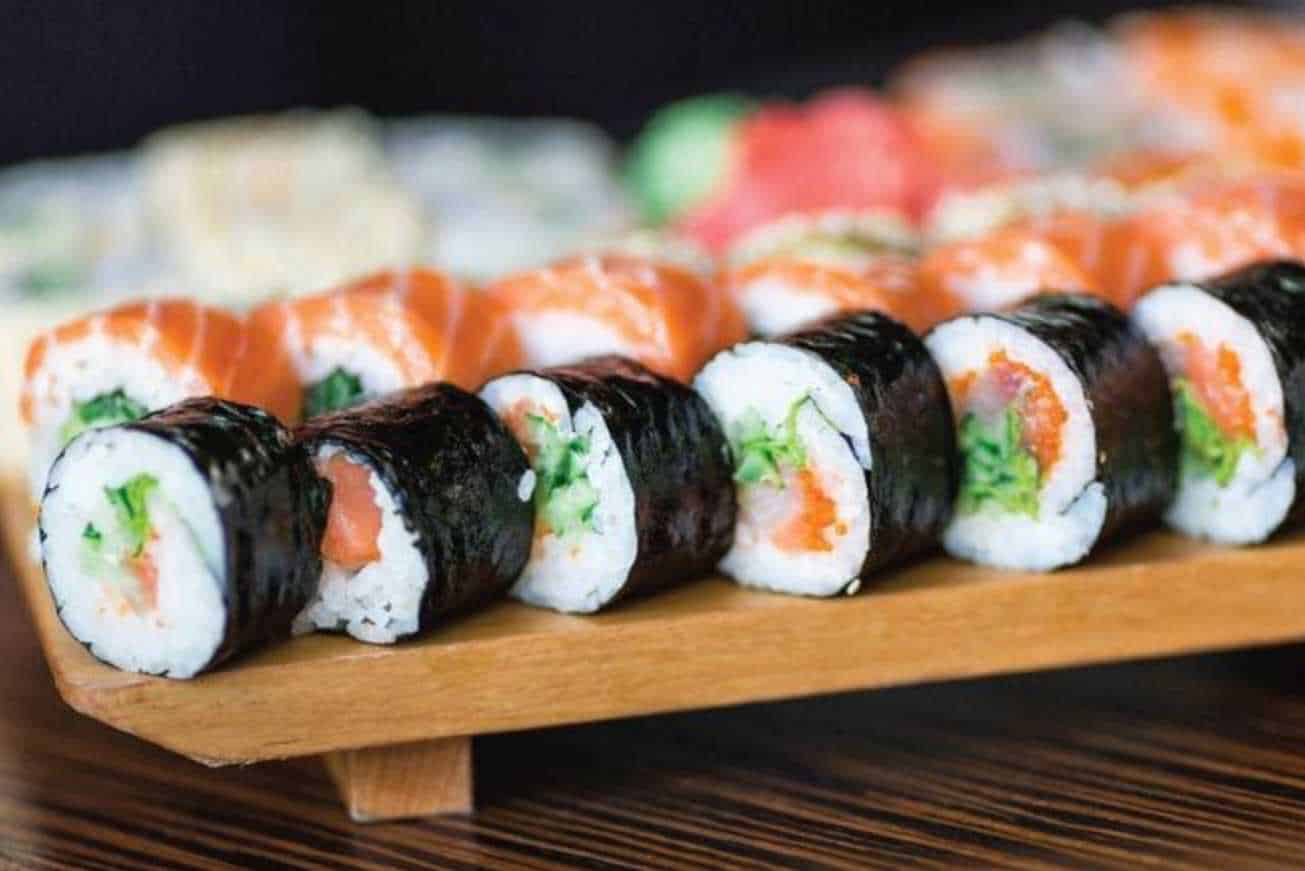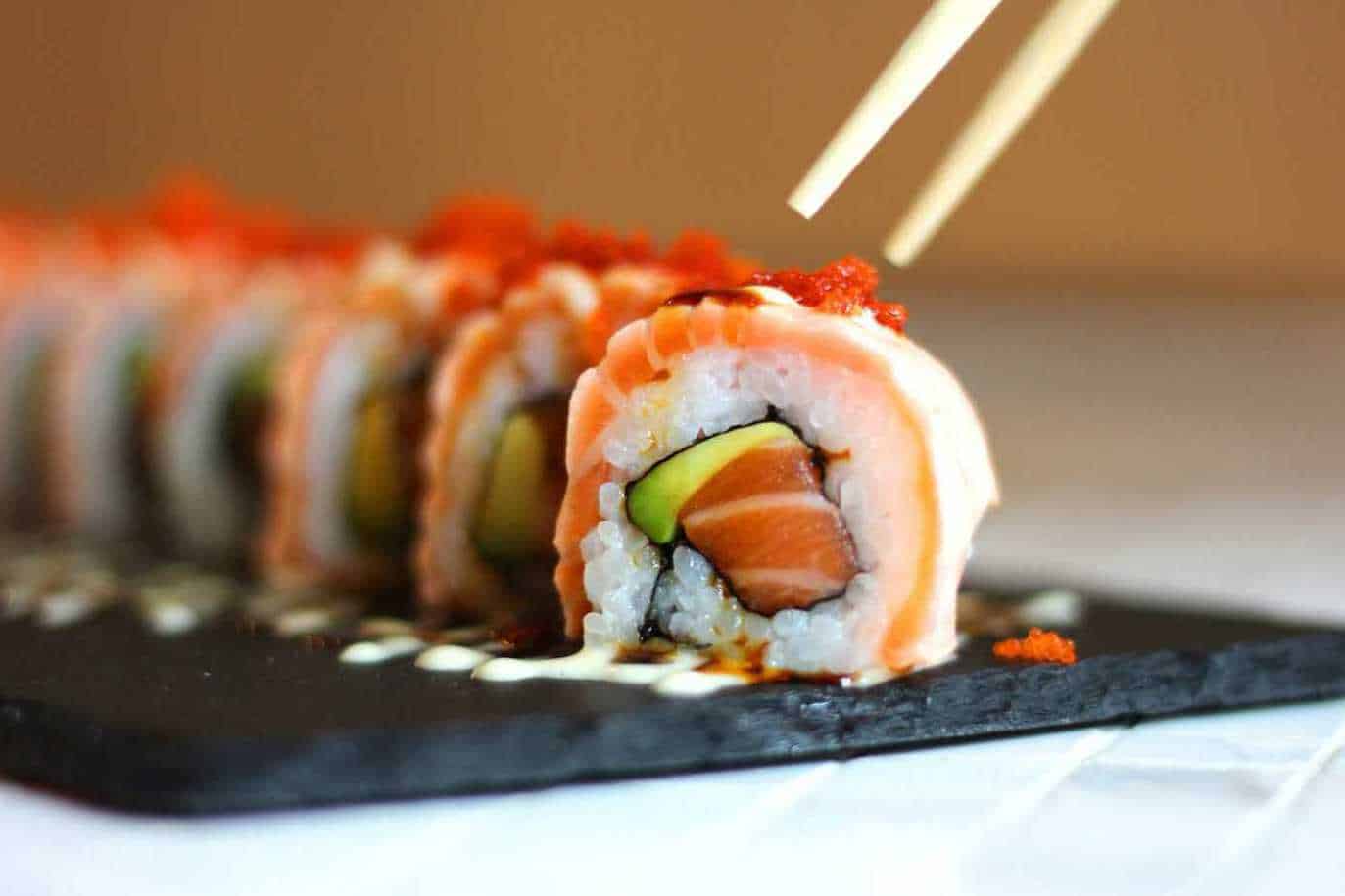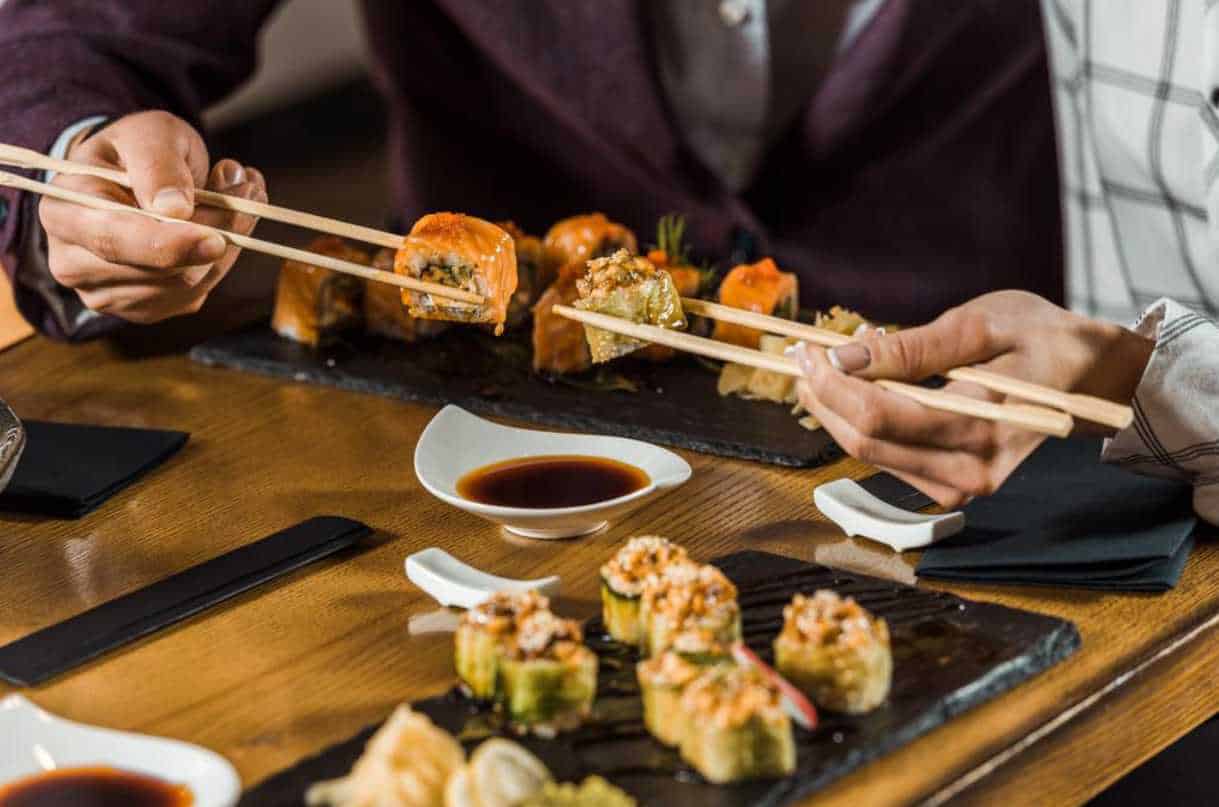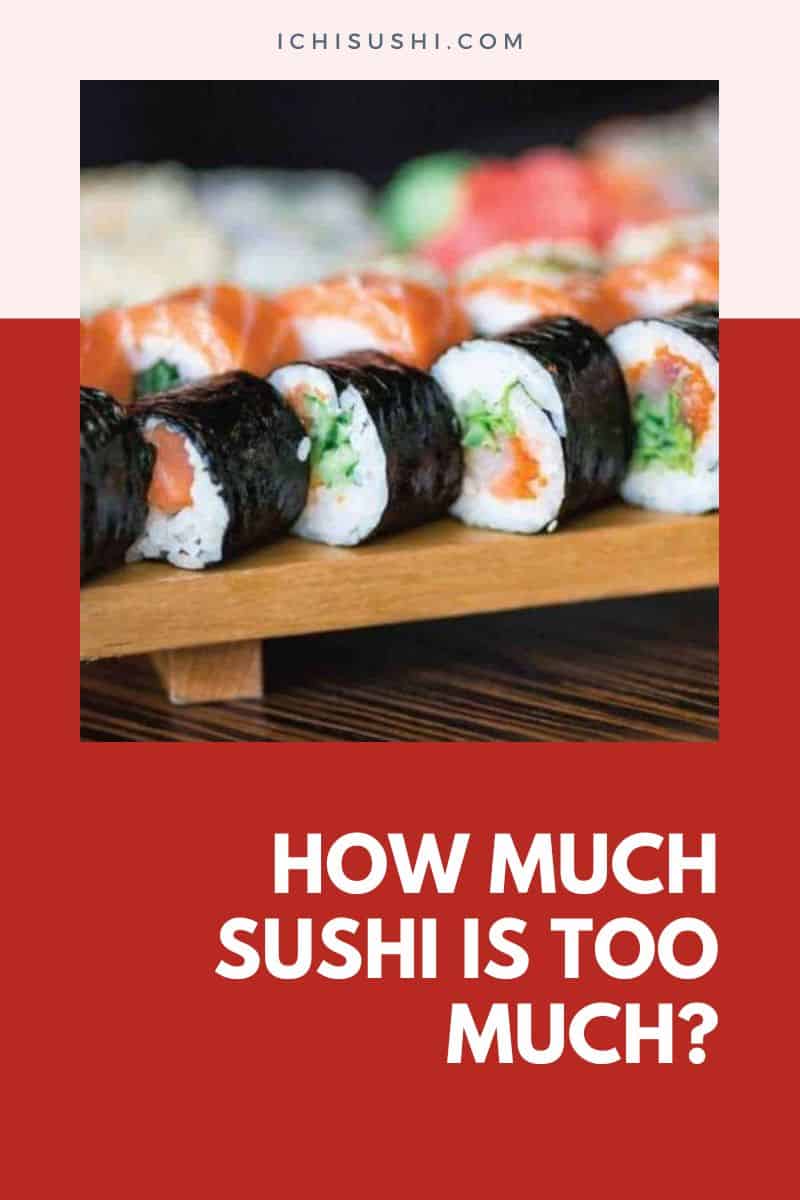Sushi is a complete, convenient, balanced meal, making it a popular takeout staple.
It can be a healthy alternative to fast food as long as you know the proper portions to consume. This article will help you determine how much sushi is too much.
Is sushi healthy?
Before diving into the right amount of sushi to consume, it would help to know the benefits of sushi to the body. It would be best if any dish you plan to eat several times a month is good for your health.
Sushi is a Japanese dish typically made with rice, seaweed or nori sheets, fish, and vegetables. The following are the benefits of sushi that can give you an idea of how healthy it is.
1. It helps control cravings
Sugar cravings are often the culprit of weight gain. Eating food rich in protein, such as sushi, keeps energy levels stable and balances blood sugar.
Consuming fish sushi can also enhance metabolism, lead to more prolonged satiety, and prevents the urge to snack between meals.
2. It supports heart health
Sushi made with fish like salmon or tuna has high amounts of Omega 3 fish oil. These essential fats can reduce cholesterol levels, inflammation, and heart disease risk. It supports a healthy heart rhythm and optimal blood pressure levels.
3. It promotes brain health
The Omega 3 fatty acids in fish can repair and nourish brain cells. The protein and essential fats found in sushi can help increase focus and concentration, making it a perfect lunch meal when you’re working.
4. It provides a good source of antioxidants
The fish and vegetables in sushi can be an excellent source of antioxidants.
They can help prevent oxidative skin damage and slow down the aging process and cell damage. Antioxidants can also aid in preserving the skin’s cellular structure, keeping it smooth and supple.
5. It boosts the immune system
You can also get your dose of minerals when you eat sushi.
It contains nutrients that help boost immunity and energy production, such as calcium, magnesium, zinc, iron, and phosphorus. It’s also a rich source of Retinol, Vitamins A and C, and Carotene.
6. It keeps the joints healthy
Like those found in sushi, fish can be a great source of calcium. This essential mineral can keep bones and joints healthy and strong. They can also act as building blocks for healthier nails and hair.
How much sushi is too much?
If sushi is a healthy dish, does it mean it’s okay to consume many of them? It may be nutritious, but anything consumed in excess can be harmful, too.
According to the American Heart Association recommendations, it’s safe to consume 12 ounces of low-mercury seafood per week. It’s about two meals containing fish, such as an order of sushi. It’s best to consume fewer fish with higher mercury levels.
On the other hand, the FDA suggests the following fish consumption guidelines. It would be best to keep this in mind when planning to order fish sushi. You can use your palm to visualize one serving size.
| Serving size | Number of Servings | Fish Group | |
| Average Adult | Size of a palm | 2-3 per week
1 per week |
Best Choices
Good Choices |
| Pregnant and breastfeeding | 4 ounces (cooked fish) | 2-3 per week
1 per week |
Best Choices
Good Choices |
| Children
1-3 years old 4-7 years old 8-10 years old 11 years old |
1-ounce 2 ounces 3 ounces 4 ounces |
2 servings per week | Best Choices |
The FDA classified fish choices into three groups. The fish listed below are those commonly used for sushi.
| Best Choices | Good Choices | Choices to Avoid |
|
● Atlantic Mackerel ● Pacific Chub Mackerel ● Salmon ● Squid ● Tuna |
● Seabass ● Spanish Mackerel ● Striped Bass ● White/Albacore Tuna |
● Big eye tuna ● King Mackerel ● Marlin ● Swordfish |
How many sushi rolls are considered healthy?
According to nutritionists, one or two rolls would be enough to have a healthy meal. The typical sushi contains white rice, so eating more than the recommended amount can spike your blood sugar.
Keep in mind to order fish and vegetable rolls to stay within a healthier range. It would also be best to be mindful of your condiment consumption. Dipping sauces can add calories and unnecessary sodium, so it’s best to stay away.
Fancy, western-inspired rolls such as Philadelphia or Vegas contain cream cheese and fried fillings, so having two rolls is too much. Half a roll would be best, or stay away from them altogether.
What will happen if I overeat sushi?
Some sushi lovers may wonder why they need to limit their consumption when the ingredients seem healthy. While veggies, fish, and rice offer health benefits, eating beyond the recommended amount can also be harmful to your health.
Here’s what will happen if you overeat sushi.
1. It can cause blood sugar spikes.
Rice, in general, ranks high on the glycemic index due to its high carbohydrate content. Glycemic Index or GI is a system that ranks the effect of food on a person’s blood sugar.
Like rice, food on the top of the glycemic index scale can cause elevated blood sugar levels, leading to crashes and constant hunger.
2. It can lead to parasitic infections.
Most sushi chefs take extra precautions when preparing raw fish, making parasitic infections rare. However, consuming vast amounts of sushi regularly can increase the chances of contracting this rare disease.
3. It can cause the accumulation of mercury in the body.
According to research, eating much high-mercury fish can damage the central nervous system. It can also be toxic to the kidney, liver, brain, and heart.
Consuming low levels of this chemical through fish dishes, such as sushi can cause headaches, fatigue, and sleep disturbances. Mercury found in seafood is very sticky and stays in the body for a long time when consumed.
Fish like big eye tuna, marlin, swordfish, and king mackerel have high levels of mercury, so it’s best to stay away from them.
Who should avoid eating sushi?
- Pregnant Women: The US FDA discourages pregnant ladies from eating undercooked or raw fish. It can expose both the mom and the unborn child to risks such as parasites and bacteria. These harmful organisms can cause diarrhea, vomiting, and abdominal pains.
The following people are also discouraged from eating sushi made with raw fish.
- Children under five years old
- Seniors over 65 years old
- Persons who are prone to foodborne diseases
- People who are taking immunosuppressant medicines
- Those who are immunocompromised
- People who have hemochromatosis, a condition of having high iron levels in the blood
What sushi is great to eat at the right amount?
It is safe to eat one to two sushi rolls as long as they are the healthier options. If you want to enjoy the maximum recommended amount, it would be best to order the following:
Rainbow Roll
As the name implies, a rainbow roll is sushi with vegetables as its main ingredient. While each chef’s version, a rainbow roll is typically made with cucumber, avocado, tuna, crab, or salmon.
It also comes with a layer of seaweed for added nutrients and flavor. You may want to eat in a sushi restaurant that offers brown rice as an alternative. Brown rice is more nutrient-dense, making you feel full longer.
This colorful sushi is high in healthy fats and protein due to the seafood it contains. They are also packed with fiber, antioxidants, vitamins, and minerals.
Vegetable Rolls
If you’re vegetarian or aren’t a seafood fan, vegetable rolls are your best option. Most sushi restaurants have adjusted to the times and are now offering more plant-based sushi options. Some crowd favorites are cucumber rolls and avocado rolls.
On the other hand, mixed vegetable rolls are made with cucumbers, carrots, asparagus, and radish. Some chefs add avocado for a creamier texture.
This low-calorie sushi packs in many nutrients like fiber, vitamins, and minerals. You may ask the restaurant server if they can provide you with a brown rice version for a healthier meal.
Salmon Avocado Roll
Salmon is a popular choice among health enthusiasts since it contains many health benefits. It’s a rich source of healthy fats, protein, vitamin B12, and selenium. Meanwhile, avocado contains magnesium, vitamin C, vitamin E, folate, and fiber.
Consuming salmon at least once a week can help increase good cholesterol or LDL levels and reduce triglyceride levels.
On the other hand, avocado can also help decrease LDL levels and give the body an overall nutrient boost. You can request a brown rice version for a healthier lunch or dinner.
Summary
Sushi is so delicious that it’s tempting to eat it as often as possible. However, no one can function on sushi alone. Doctors and nutritionists highly recommend a well-balanced diet composed of various food.
Knowing how much sushi is too much can help you plan your weekly menu and help you order the right kind in a restaurant.

Hiroshi Nakamura, a Tokyo-born sushi chef turned US-based writer and critic, is the voice behind ichisushi.com, blending traditional sushi wisdom with modern insights.





